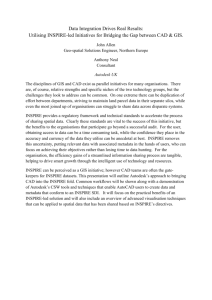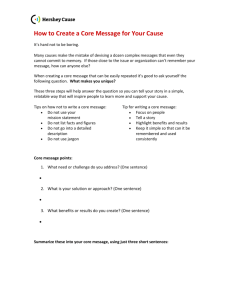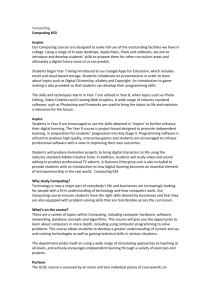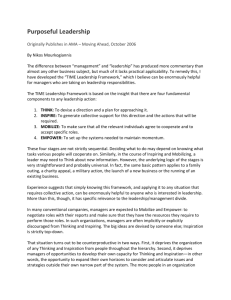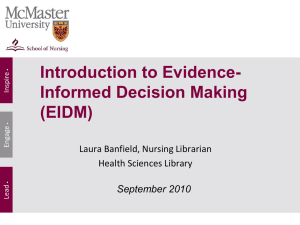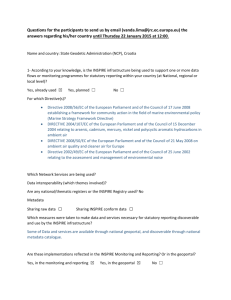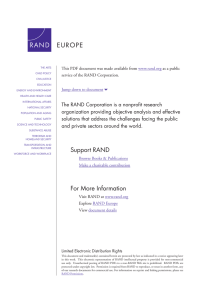Integrating Evidence-Informed Decision Making in the School of
advertisement
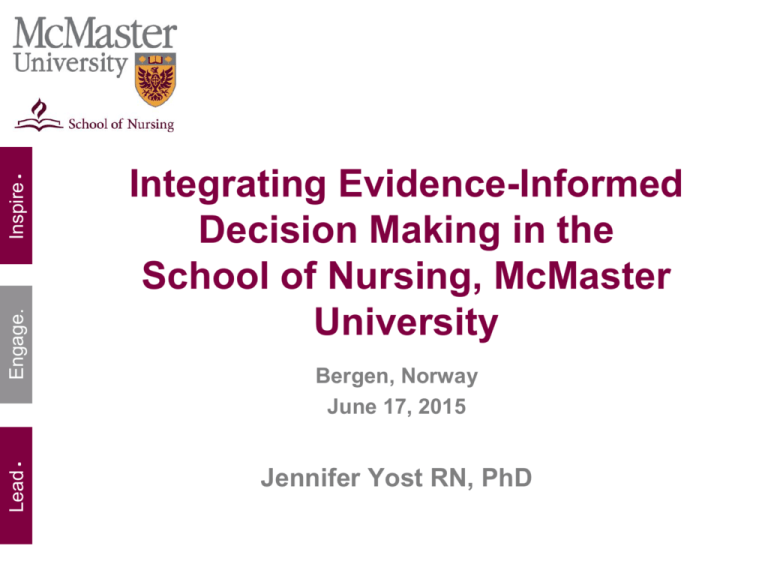
Inspire. Engage. Lead. Integrating Evidence-Informed Decision Making in the School of Nursing, McMaster University Bergen, Norway June 17, 2015 Jennifer Yost RN, PhD Engage. Inspire. School of Nursing Within the Faculty of Health Sciences Undergraduate and graduate programs Undergraduate program – Collaborative program across three different sites – ~ 1300 students – Three streams (BScN, Accelerated, RPN-BScN) Lead. Graduate program – MSc in nursing; course-based, thesis, and nurse practitioner – PhD in nursing Evidence-Informed Decision Making (EIDM) Inspire. (McKibbon et al., 2010) EIDM Lead. Engage. EIP, EIHC EBP, EBHC EBM, EBN Evidence-Informed Decision Making (EIDM) Evidence-Informed Practice (EIP) Evidence-Based Health Care (EIHC) Evidence-Based Practice (EBP) Evidence-Based Health Care (EHBC Evidence-Based Medicine (EBM), Evidence-Based Nursing (EBN) What we teach Framework for EIDM Clinical state, setting, and circumstances Engage. Inspire. (DiCenso, Guyatt, & Ciliska, 2005) Patient preferences and actions Clinical Expertise Lead. Clinical Expertise Research evidence Health care resources Steps to EIDM Evaluate the effectiveness of implementation strategies Decide if & how to implement the adapted evidence into practice Adapt the information to a local context (NCCMT, 2014) Clearly define the question or problem Efficiently search for research evidence Critically & efficiently appraise research sources Interpret/form practice recommendations informed by the evidence Engage. Inspire. How did we teach EIDM? Some EIDM taught in Year 1 Required course – 3C04: Introduction to Research Methods and Critical Appraisal – Taken in the 3rd year (or stream equivalent) Lead. EIDM EIDM Lead. Engage. Inspire. Year 1 & EIDM Year 1, 1st term – Library orientation – Information literacy [evaluation component] Developing learning questions (background, foreground/clinical) Evaluation of resources Year 1, 2nd term – Foreground/clinical questions [in-class] Quantitative (PICO) Qualitative (PS) – Information Literacy [evaluation component] Evaluation of resources Year 3, Required Course & EIDM Inspire. EIDM Integration EIDM is now integrated through all levels of the curriculum Lead. Engage. i.e. traditional 4 year student EIDM EIDM EIDM EIDM Inspire. EIDM Integration - Why? Opportunity for change – BScN curriculum was being revised Resources Engage. – Development of teaching-learning strategies Student feedback – “Why didn’t we learn about EBP sooner” Lead. Expected competency – Regulatory body (College of Nurses of Ontario) – Clinical agencies Lead. Engage. Inspire. EIDM Integration – How? Step 1: Faculty members with expertise in EIDM met to discuss the “leveling” of the integration of EIDM throughout the curriculum Leveling of EIDM Outcomes Level 1 Level 2 Level 3 Level 4 • EIDM Framework • EIDM Steps • Clinical Questions (PICO/PECO/ PS) • Quantitative vs Qualitative paradigms • 6S Pyramid/ • Searching • Appraisal: Practice Guidelines • Searching • Research designs • Appraisal: Intervention Studies • Appraisal: Qualitative Studies • Appraisal: Intervention Studies • Appraisal: Systematic Reviews • Appraisal: Studies about Prognosis & Causation/ Harm • Appraisal: Practice Guidelines • Knowledge Translation • Reinforcement of Appraisal Skills • Knowledge Translation Lead. Engage. Inspire. EIDM Integration – How? Step 2: Faculty member appointed to oversee the integration of EIDM. Step 3: Faculty member then requests current course materials Lead. Engage. Inspire. EIDM Integration – How? Step 4: Faculty member reviews the current PBL/PBL course material to identify recommendations for how to integrate EIDM into the course materials. This includes: – Revision of existing course activities and/or evaluation measures – “New” course activities and/or evaluation measures Lead. Engage. Inspire. EIDM Integration – How? Step 5: Faculty member meets with the faculty responsible for the courses Recommendations for integration of EIDM are made Discussion occurs, and decisions are made based on consensus about how to integrate EIDM into the courses. Lead. Engage. Inspire. EIDM Integration – How? Step 6: Faculty member either revises and/or creates “new” course activities and/or evaluation measures. – Including “Tutor Guides” for faculty Step 7: The revised and/or “new” course activities and/or evaluation measures are implemented into the courses Lead. Engage. Inspire. Course Activities Various activities used throughout all levels: Required textbook Library sessions (multiple) Online learning modules Embedded exercises Worksheets Health Science Library Page Online Learning Modules Engage. Inspire. Evaluation Measures Various methods throughout the curriculum: Assignments Short papers Scholarly papers Exam Lead. – Now 2 quizzes Lead. Engage. Inspire. EIDM Integration – How? Step 8: Prior to implementation, faculty member conducted ½ to full day faculty development workshops before the next term began – provided exposure to the EIDM content and teaching strategies for the faculty Lead. Engage. Inspire. EIDM Integration – How? Step 9: Faculty member meets with the faculty responsible for the courses on an ongoing basis to review formal and anecdotal feedback from students and faculty on the integration of EIDM and, as necessary, further revisions are implemented. Lead. Engage. Inspire. Successes Significant improvement in Exam marks with integrated curriculum vs stand-alone course – Mean difference 8.53, 95% CI (7.52, 9.54), P < 0.001, N = 2255 Informal and formal feedback that the redesign is “working” – Students – Faculty Lead. Engage. Inspire. Keys to Success Faculty buy-in Responsibility of one faculty member Resources Staggered implementation Faculty development sessions Library support Lead. Engage. Inspire. Challenges Faculty development – EIDM knowledge – Knowledge and skills for teaching EIDM Time Lack of student preparation Change in class size Continued resources for teaching-learning activities Lead. Engage. Inspire. Questions Lead. Engage. Inspire. For Further Information Contact: Jennifer Yost PhD, RN Assistant Professor School of Nursing, McMaster University jyost@mcmaster.ca (t) +1 905 525 9140 x 21927 Lead. Engage. Inspire. References College of Nurses of Ontario (2014). Competencies for entry-level registered nurse practice. Retrieved from http://www.cno.org/Global/docs/reg/41037_EntryToPracitic_final.pdf?e pslanguage=en DiCenso, A., Guyatt, G., & Ciliska, D. (2005). Evidence-based nursing: A guide to clinical practice (pp. 154-171). St. Louis: Elsevier. National Collaborating Centre for Methods and Tools (2014). Evidence informed public health. Retrieved from http://www.nccmt.ca/eiph/indexeng.html


